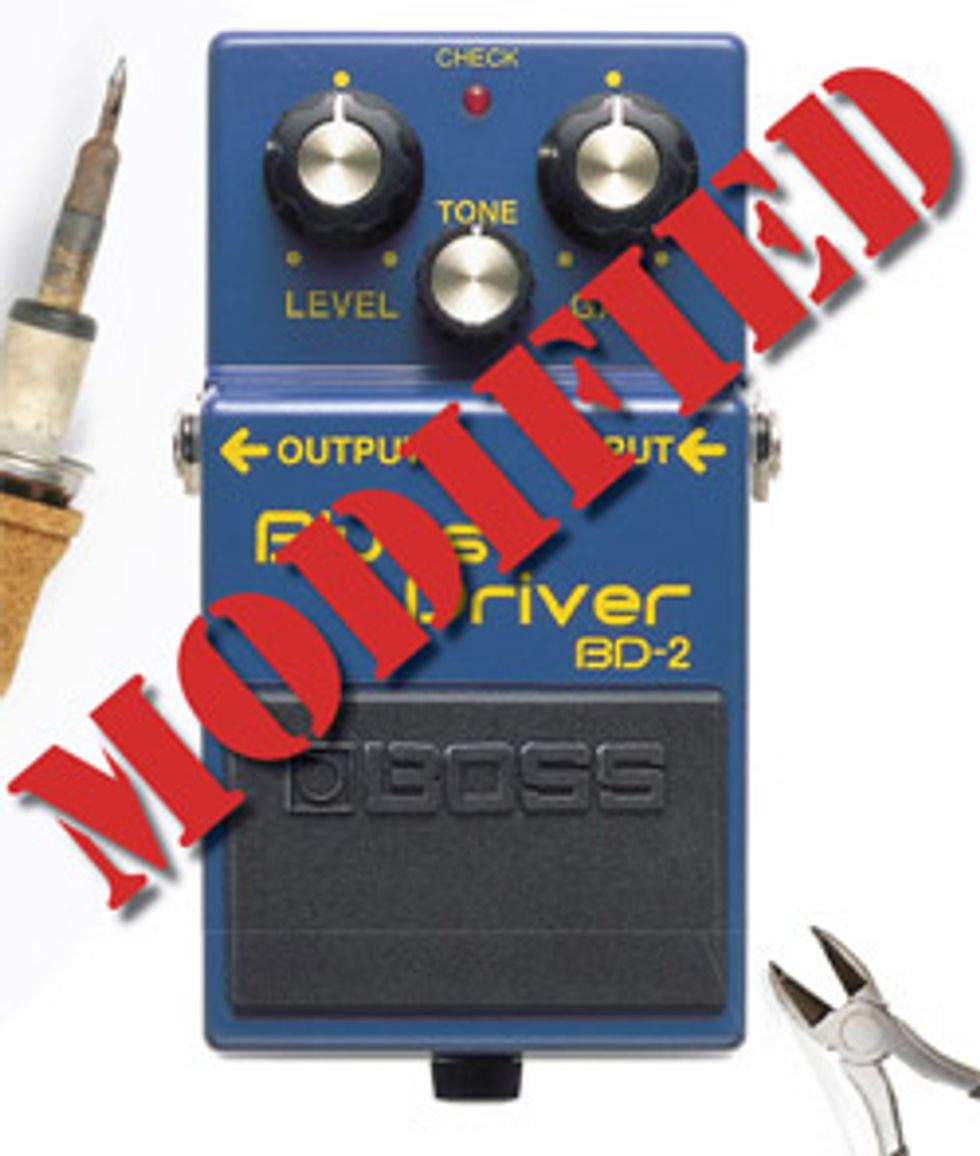 |
|
The Circuit
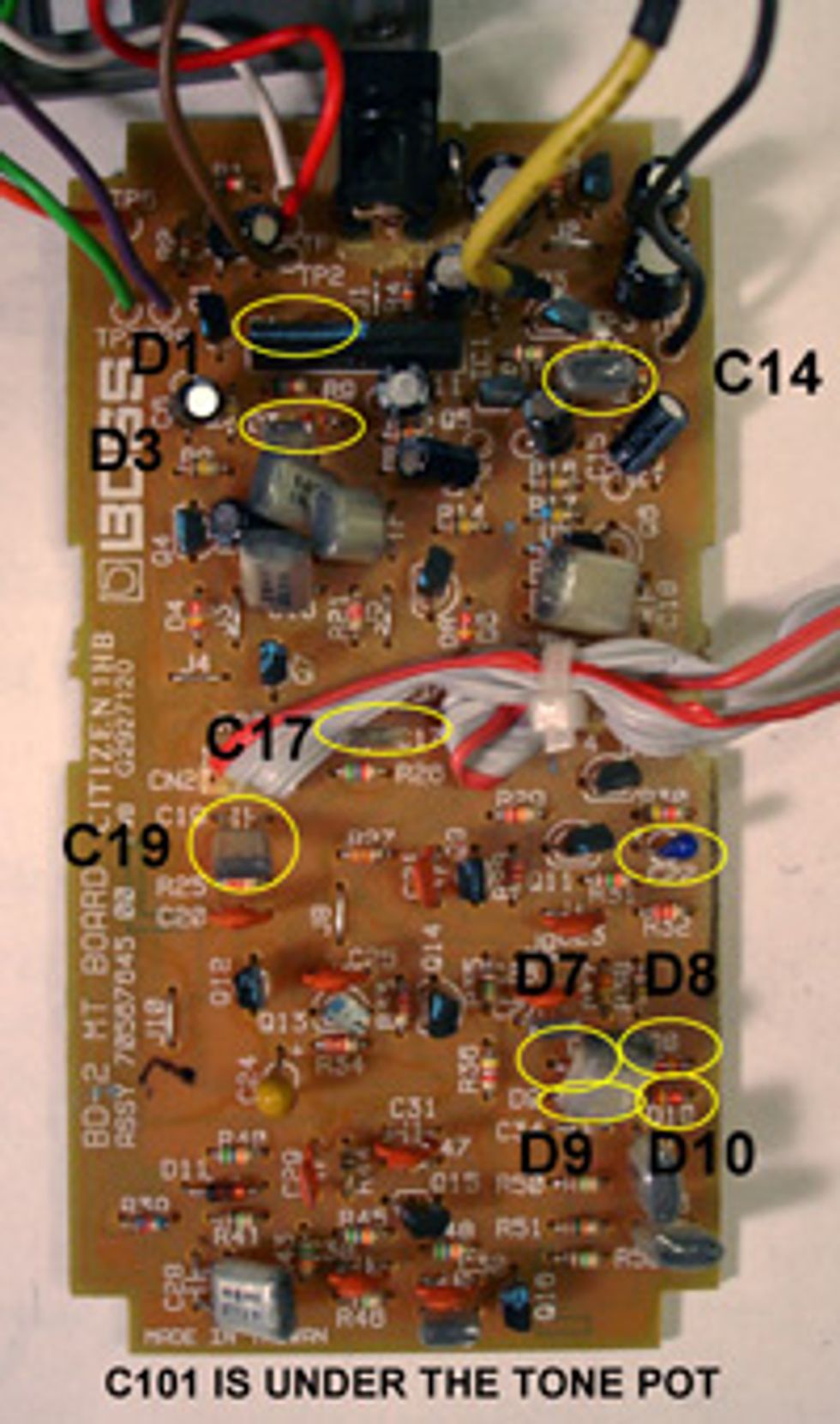 Larger Image |
In layman’s terms, a discrete opamp is similar to the IC chip version. It does the same thing, just in a simpler fashion that some feel is more responsive and less “sterile” feeling and sounding. It uses two FETs facing each other followed by a bipolar transistor. There are two of these types of gain stages in the BD-2, controlled by a dual gang 250k pot wired as a variable resistor. Just like the IC opamp circuits, there is a resistor/capacitor pair going to ground that will also help set a frequency to clip. This pair will also help set the gain, though they are fixed values in the BD-2. R31 and C22 are the pair for the first stage, while R15 and C9 are the pair for the second stage.
We know that EQ before clipping determines the clipping feel, tonality, and response (distortion/overdrive) quite dramatically. For example, if we want a fuzzier type of distortion, we want to increase the bass before it is clipped. Then, we clip the signal as much as possible without creating a lot of noise or oscillations.
R31 and C22 in this first gain stage set a frequency of just a hair over 700hz. This is a normal frequency for most overdrives and distortion. If you want more fuzziness, increase this cap to .22uf (microfarad) or larger. If you want a tighter crunchier type of tone, make the cap smaller. If you plug in these values to my calculator at indyguitarist. com/filter.htm you will see the frequencies you can affect.
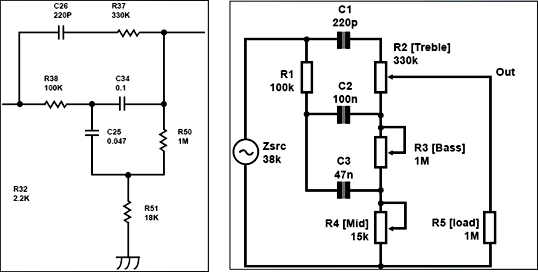 BD-2 tonestack (left) and Traditional Fender tonestack (right) |
After this first gain stage, we go through what first looks like an odd tone filtering stage. It is actually a Fender-type 3-band tonestack with fixed values (with the treble on 0 and the bass and mid on 10). This is a really cool thing to mess with if you want to go hog wild, because you can add trim pots in place of R37 (use a 250k trim pot for treble), R50 (use a 1M trim pot for bass), and R51 (use a 25k trim pot for mids). In addition, you can change the ‘slope’ resistor, R36, to a 33k, C34 and C35 to a .022uf, and change C26 to a 470pf in order to get more of a Marshall type of tonality before the signal is clipped. When you are replacing these resistors with trim pots, just connect one hole to pin 1 on the trim pot, and the remaining resistor hole to pin 2 on the trim pot. Leave the third lug untouched.
The BD-2 EQ before clipping looks like this due to this filter:
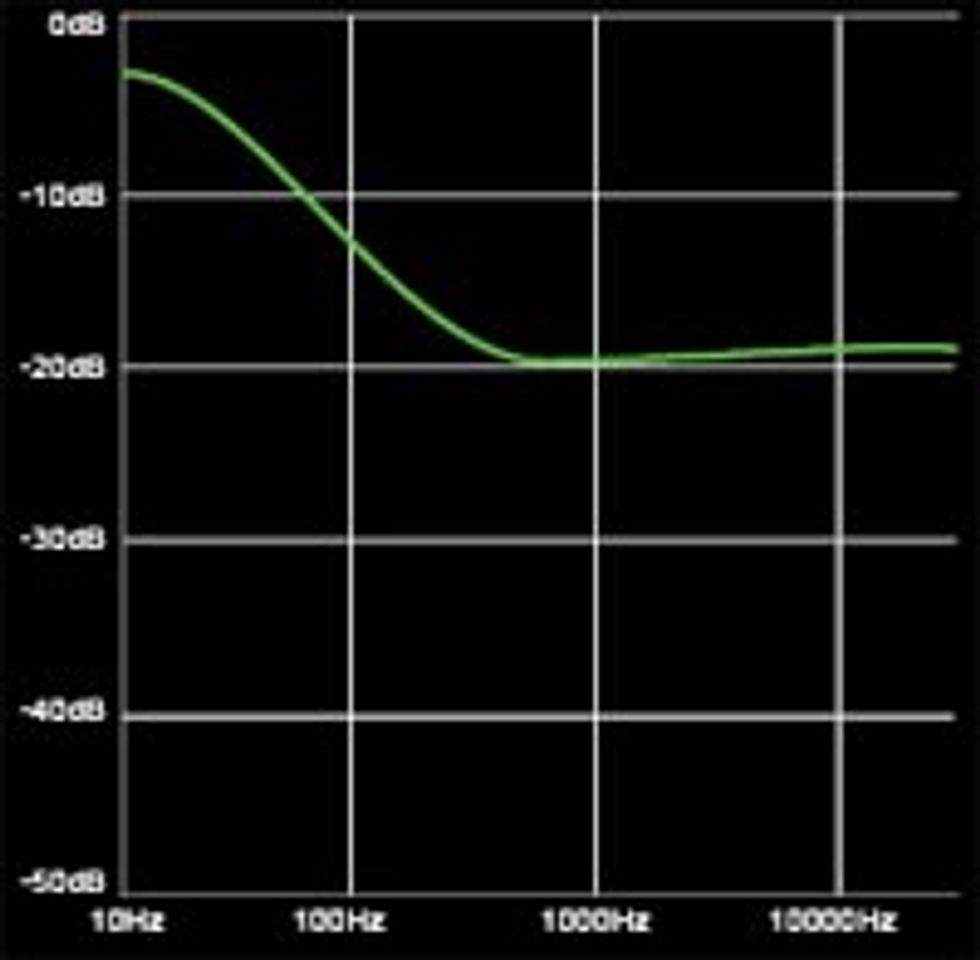 |
Notice how there is a ton of bass present? That is before the majority of the clipping is happening, so it’s no wonder the pedal sounds fuzzy when the gain is turned up!
A good mod at this location is to make R50 a 100 ohm, and change R36 to a 47k. That will give you a much flatter EQ response.
After that the signal is clipped by diodes connecting to ground (D7, D8, D9, D10) with two diodes on each side and fed into another discrete opamp. This opamp is nearly identical, except the frequency response is a little different. There is more gain in the bass (set by R34 and C24, frequency is about 72hz) but it works exactly the same. Notice that since the bass is boosted yet again here it’s really no surprise that the BD-2 would be so fuzzy with the gain turned up.
C17, R25, and C19 form both a highpass and low-pass filter, which will get rid of some high harmonics about 5k or so, as well as to get rid of some of the bass content that was created by boosting the lows so much previously.
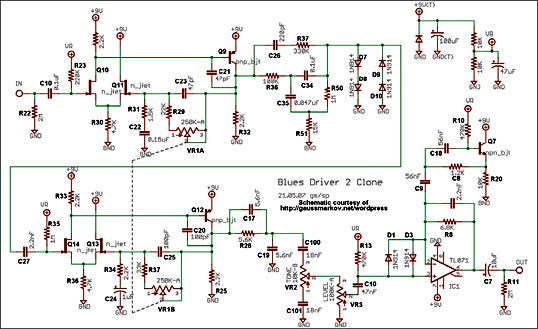
From here, the signal goes through a fairly standard tone control very similar to that of an old Fender tweed Princeton. It acts as a high-pass filter with the tone knob turned up, and a low-pass filter with the tone knob turned down. So, you increase the highs as you turn up the tone, and lose some bottom end once you are past about halfway or so. Changing C100 will change what high frequencies are filtered with the tone control up, and changing C101 will change what frequencies are filtered with the tone control turned down. The volume control is next before going into the next stage—the EQ stage.
The next stage is a simulated inductor, which is boosting the bass content at about 120hz or so by 6dB. Even though there are diodes in this stage (D1 and D3), they aren’t really clipping much at all like diodes usually do in an overdrive or distortion circuit—it is actually more to protect this opamp from being slammed with a loud and hard signal. It also does a little bit of filtering as well as help to output a low impedance signal. Changing these diodes to a different type will give a little bit different “feel.” However, it becomes a little less compressed if you use LEDs, and becomes a bit more compressed and filters out a bit of the highs if you use germanium type diodes. This is probably due to varying degrees of harmonics being ever so slightly clipped.
If you want to mess with the EQ, there are several ways to do it. You can try changing the cap sizes of C9 and C16, or changing R21. Changing the caps can get you many more frequency options just by subbing in various values. Increasing the resistance lowers the frequency and decreasing it raises the frequency to a point. You might even try subbing a 5k trim pot here just for fun!
From here it goes into the switching circuit and then to an output buffer. Even when it’s in bypass the pedal is going through three discrete buffers.
A lot of folks just want to know, “What do I change to make it sound better?” In that case, I’d recommend several different options. The Blues Driver mod that I probably do most often is the Brent Mason modification. This mod is very easy, and only requires changing a few parts. It was a modification that I did in response to Brent Mason’s request for better tone from his blues driver. It will give you a meatier, more “round” sound and excels at low to mid gain:
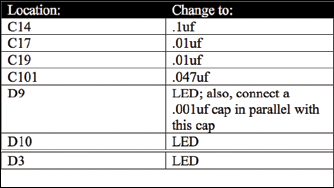 |
Another popular mod is the “Tweed” mod—designed to give you a bit more of the “woolly” tones from an old Fender amp.
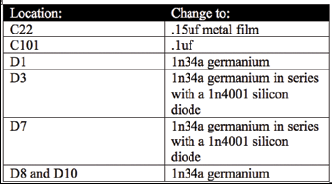 |
All of these parts can be found at my favorite parts supplier, Small Bear: smallbearelec.com.
All in all, this is a great palette to work from for great tones. Let me know what you think—you can find my contact information at: wamplerpedals.com
Brian Wampler is an author, effects designer/builder, and operates IndyGuitarist Custom Effects: indyguitarist. com and wamplerpedals.com. His books include How to Build Effect Pedals, How to Modify Effect Pedals, and Advanced DIY Effect Pedals, and are available at indyguitarist.com.






![Rig Rundown: Russian Circles’ Mike Sullivan [2025]](https://www.premierguitar.com/media-library/youtube.jpg?id=62303631&width=1245&height=700&quality=70&coordinates=0%2C0%2C0%2C0)

















